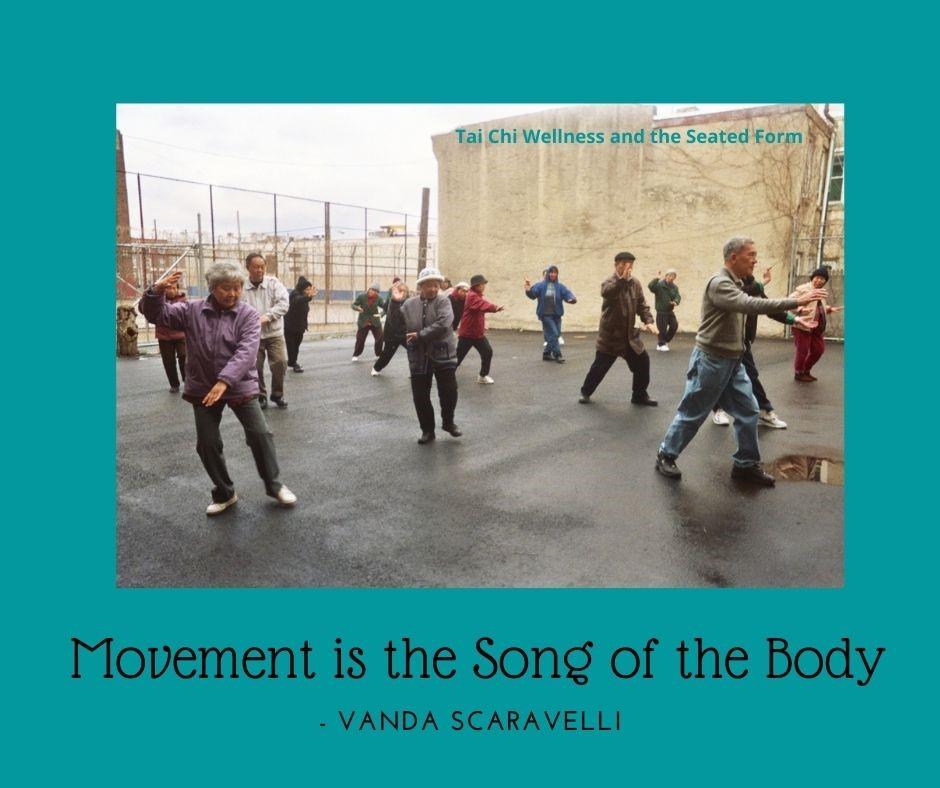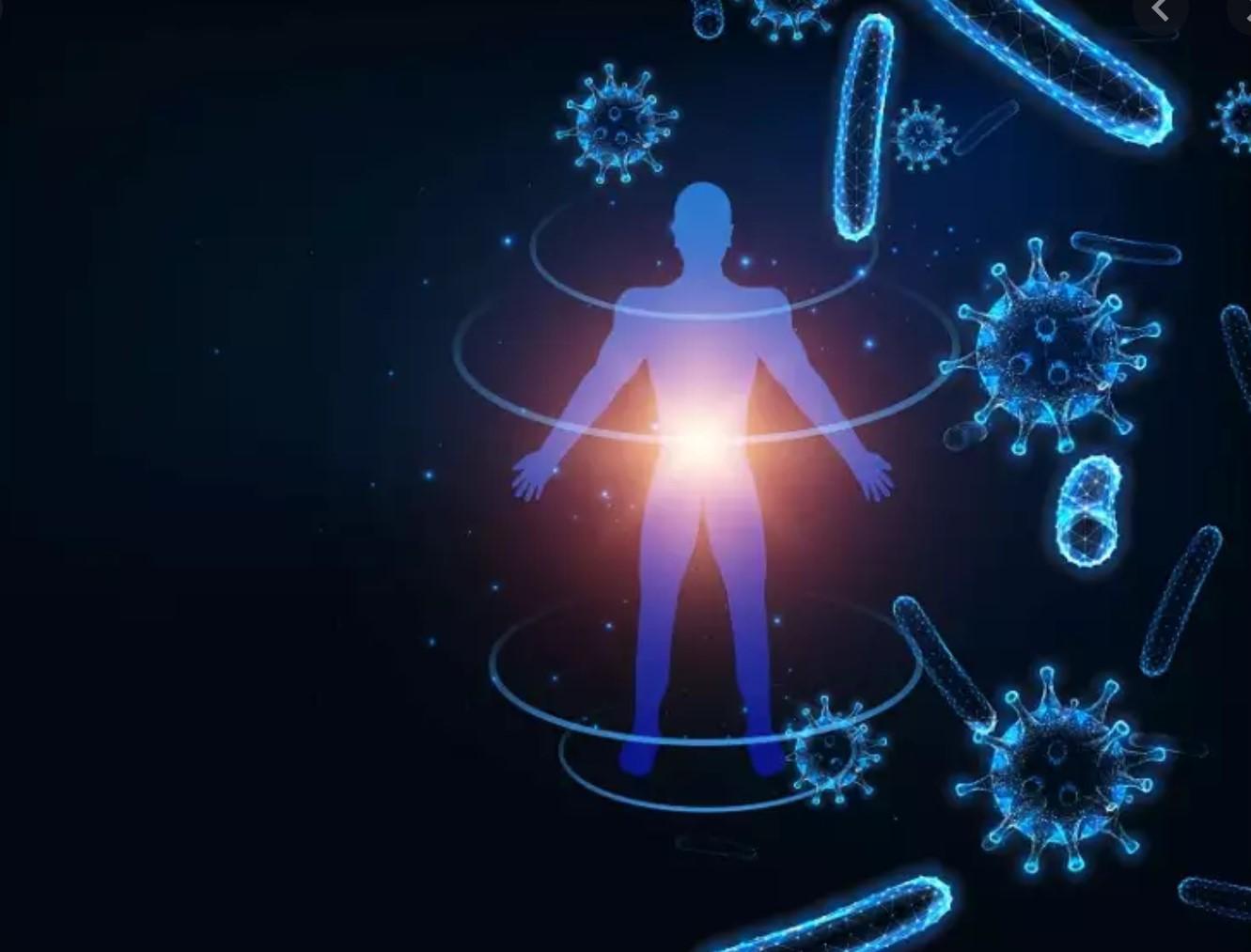
25 minute read
Purpose Boosts Immunity
Healthy Travel Advice from the Pros
Purpose Boosts Immunity with Wayne Topping
Advertisement
By Alexis Costello
F
or this issue, it felt important to address the immune system as a multi-layered and holistic structure –not just the T-cells and B-cells, but how emotions and energetic flows affect it. Who better to discuss this with than Wayne Topping? He offers far too many studies and stories to accurately share everything here; visit YouTube for video of the complete interview.
A: How do stuck emotions affect the immune system?
W: We know that when we are experiencing any type of negative emotion it tends to shut down the frontal part of the brain – redirecting energy to the limbic system so we then react. We have a non-specific response in the body such as blood being pulled away from the skin and extremities, the body changes in various ways as it prepares for a fight/flight response. Most people don’t recognize what’s happening with the immune system. Many years ago, I read a book by John Diamond – you’ve probably read it –“Your Body Doesn’t Lie”.
Immune System
One of the things that he showed was that the thymus would actually shrink by 50% in size and weight within 24 hours as a result of stress. Why would that be? Wouldn’t we want the immune system to be strong under those circumstances?
There’s only a certain amount of energy in the body, there’s only a certain amount of blood available, and certain things get top priority in those fight/flight emergency circumstances: big skeletal muscles, heart, and lungs, so we can run out of harm’s way or fight the aggressor. The immune system takes a lot of energy; it can be shut down temporarily if it’s a true emergency. And that’s fine. But these days we don’t have a true emergency, we have a chronic, unfolding pandemic!
There’s a lot of stress because you look at newspapers, TV, social media; and those sorts of things attract our attention with negative stories and negative headlines, so people are stressed out all the time and this is having a chronic debilitating effect on the immune system at the very time when we need to be strong.
A: It seems very unlikely that we would be able to work with people in retirement homes and hospitals at this time, holding their ESRs as we often do to bring general emotional stress into balance. So how do we help those people?
What is the advice for those who are isolated?
W: I really saw the problem when I was teaching in Russia – I gave a lecture to a large group with over 300 teachers. And a lot of them had been exposed to Brain Gym and they were really excited because here are some relatively simple exercises that could bring about significant change within young bodies and brains to help prepare them for the learning environment. The frustration was that they couldn’t sell the administration on why this was so important. The administrators can’t figure out how to explain it to parents, so rather than let it be used for the benefit of the students, they shut it down. I saw their frustration. So I’ve realized that’s there’s no way the governments are going to allow us as kinesiologists to run around old folks’ homes teaching them stress release! It’s weird; it’s not part of the medical model and they can’t explain it. So what we can do? We have to start taking a different approach. One of the things that comes to mind is a study I remember reading about in the United States where they had an old folk’s home and as an experiment, they divided the residents into two groups. One group was given an assignment and the other group was not. At the end of the experiment the group given the assignment had 1/3 the illnesses and sickness and 1/3 the deaths of the other group. You might think, ‘that was a pretty powerful assignment!’ but all they were told was, ‘it’s your responsibility to water the plants.’ That’s all. And that drastically decreased illness and death. Why? Because they had a purpose. And it may be a small purpose, but the point is that as people get older, they don’t need much of a purpose in order to stay alive and be a lot healthier. So if I was in charge of rest homes, what I would be doing is figure out: what small task could we give each of these people to do so they have purpose, so they can feel some sense of fulfillment as if they’re contributing to the community, and that will greatly strengthen their immune systems. But what we have is a modern warfare type approach to combat (virus) as if it’s a battle, and they’re not looking at social factors and the research available to see that there are a lot of simple things that could be applied.
A: That’s really interesting – I wouldn’t think of something like caring for a plant as being that strong of an immune stimulant! It’s not just people in nursing homes that are feeling alone and purposeless right now – a lot of people are
really struggling with isolation, so how do we work with that?
W: Isolation is a really big factor. Another study: I remember reading about a place in the US called Roseto about 75 miles north of Philadelphia, and these were Italian immigrants that had come from a place of the same name in Italy. They were living like typical Italians (laughing, smoking drinking, church on Sunday to ask forgiveness!) and in many homes, 3 generations living in the same household; grandparents, parents and kids. Terrible diet, so you’d think that would be a formula for heart disease; but they actually had very low rates of heart disease and the authorities couldn’t figure it out. Researchers figured it had to be the water. But it wasn’t. This was in the 60’s and in the period of time since then, the Italians started marrying outside their community – left the community, left the church. Many straightened out their diets and quit smoking, but the heart diseases rates went up until it was the same as all the surrounding communities. It was the social cohesion –living together in extended family groups, going to church together - that gave them the resistance to heart disease. When they became Americanized, they lost their protection. There was another study with rats (you can’t do this sort of thing with humans), they wanted to deliberately induce plaque build-up on the arteries. They were feeding the rats a terrible diet to build up the plaque as fast as they could. The rats die and they open them up and observe; and it was going great. The only thing is, there was one group of rats that

weren’t doing what they were supposed to – they weren’t dying of heart disease! And they discovered that the woman in charge of those particular rats would stroke them and talk sweetly to them and display tender loving care. And that fouled up the experiment because her tender loving care more than compensated for the terrible diet and the plaque wasn’t building up inside those arteries. That mishap showed them that the emotional factors were more important than the nutritional ones. (So if your husband has a terrible diet, you can stroke his hair and say I love you and it more than compensates!)
A: One a different track for a moment – one of the things that we are encouraged to do in different modalities is not just to do balances, but to balance with specific goals. Thinking about what you said previously about how having a task or a specific goal helps the immune system: do you have any thoughts about setting goals that will help to support us through this time?
W: There was a Body Age Study done in the 80’s by the Canadian Institute of Stress. They were looking to reverse the biological clock. They had over 600 volunteers and they wanted to determine, not their chronological age, but their biological age. How do you determine that? They looked at blood pressure, heart rate, skin elasticity, reflexes, etc. Then they put them into five different groups. One group focused on nutrition, one relaxation, one exercise, one self-affirming communication, and the last focused on values and goals. They did this for 8 months, then looked at the results. Most people started out with a biological age 10 years older than their chronological one and most finished up 8 years younger. Most people would assume that exercise or nutrition turned out to be the most important. No, ‘values and goals’ was the most powerful intervention.
I’ve been wondering over the years; why is goal setting so powerful? And I think it’s because it gives you more control and more commitment to life. There was another study where a large company had laid off thousands of people. They looked at all these laid-off executives and wanted to know; why do some of them get sick, or have heart attacks, or commit suicide, versus the ones that seem to take it in stride? They were looking at hardiness: what they found were three major characteristics, and one of them was control. If you have perceived control of your circumstances, you’re a lot more hardy and less stressed, less impact on the immune system then if you feel powerless. The second is commitment, and those two, control and commitment, both align with goals. Those with goals are focused and less stressed by life’s circumstances, like coronavirus for example.
A: You’re saying that it’s the reduction in stress that comes with goal setting that would positively affect the immune system?
W: Well, I remember listening to John Thie once at a conference. It was a fix-as-you-goal balance, nothing sophisticated, and he said, if it took him 60% of the time to find the goal, that was the most valuable part of that session.
And I thought, well of course if it takes 60% of the time to find the goal, then obviously the goal was not very focused and clear in the first place. Once you have clarity on it, you’re probably going to achieve it whether or not you did any balancing!
A: One of the things that’s on people’s mind right now is economic instability. Some people are being forced into early retirement, putting them at risk for the stress you mentioned previously. How do we help them, as we know this is one of those scenarios where the immune system can become compromised?
W: In one big company in America (I won’t mention its name) they discovered that by the time upper executives retired, they would be dead in 18 months. If you don’t have structure and purpose in your life, something to invest your energy in, the body can start shutting down quite quickly and they become more vulnerable. The Chinese word for ‘crisis’ involves two characters: danger and opportunity. A pandemic is a danger – we all know it, that’s why jobs have been cut, companies have folded, everything is in crisis. But every danger is associated with an opportunity. When someone is laid off, they have two choices: they can drink more, or smoke more cigarettes, or play a lot of video games, because that’s what they’ve always done to handle stress. The other choice is to say, “I didn’t ask for it, but I’ve got this time on my hands – what am I going to do with it?” So if you’ve ever dreamt about writing a book or becoming proficient in a new language… now would be the opportunity to do that. What can they put their energy into that would give them a sense of purpose now that they have the time available? Focus on the areas where you have some control, rather than the areas that are out of your control.
A: Being proactive, rather than reactive –moving forward, rather than waiting for the next bad thing to happen to you.
W: And a lot of people in life are reactive, and particularly under these current circumstances.
A: How would you assess and balance the energetic structures involved in the immune system?
W: So a more kinesiological approach! I became a TFH instructor in 1977 and met John Barton shortly after that and was really impressed with his system. I started working with him, and Biokinesiology is different from most other kinesiologies. Most kinesiologies are based on a 14 meridian model; the12 of the wheel and 5-element model and the Central and Governing. But there are the 8 extra meridians (which include Central and Governing) which are present in the body before the others get established. One of these is Mobility Yang which is associated with the thymus. When you look at the emotions that affect that: feeling life’s
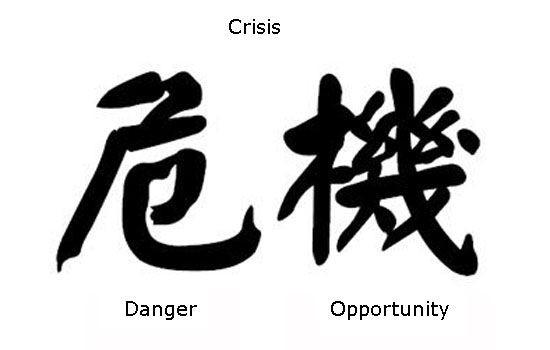
difficult, too hard, too much responsibility, neglected – look at all those emotions – those are the emotions that are being triggered now. So one of the things I do is check the thymus reflex which is on either side of the sternum bilaterally. Find the positive emotion to put in, and work with the cause of the negative emotion.
Those familiar with John Diamond’s work might say that ‘faith’ is the emotion that is associated with the thymus. I disagree. He said faith balances out the thymus which balances out the meridian system. John Barton found that faith balances the heart chakra, which then affects the meridian system. So they agree that ‘faith’ controls the meridian system. What is the opposite of faith? Unfaithful, but also, despair, hopeless, helpless, fear, etc. Which is what people are experiencing a lot of these days. When someone decides a situation is hopeless, it’s almost like they give up the will to live. It’s like when someone gets a cancer diagnosis and is told by the doctor that it’s terminal, even though they have been apparently healthy up until that point, as soon as they are told they are terminal, often times within days they are dead. They go into despair and the immune system shuts down quite quickly. What they need here is hope, a purpose for living and faith in a positive future. (Note: Wayne spoke further on this topic – check out the video for the full interview)
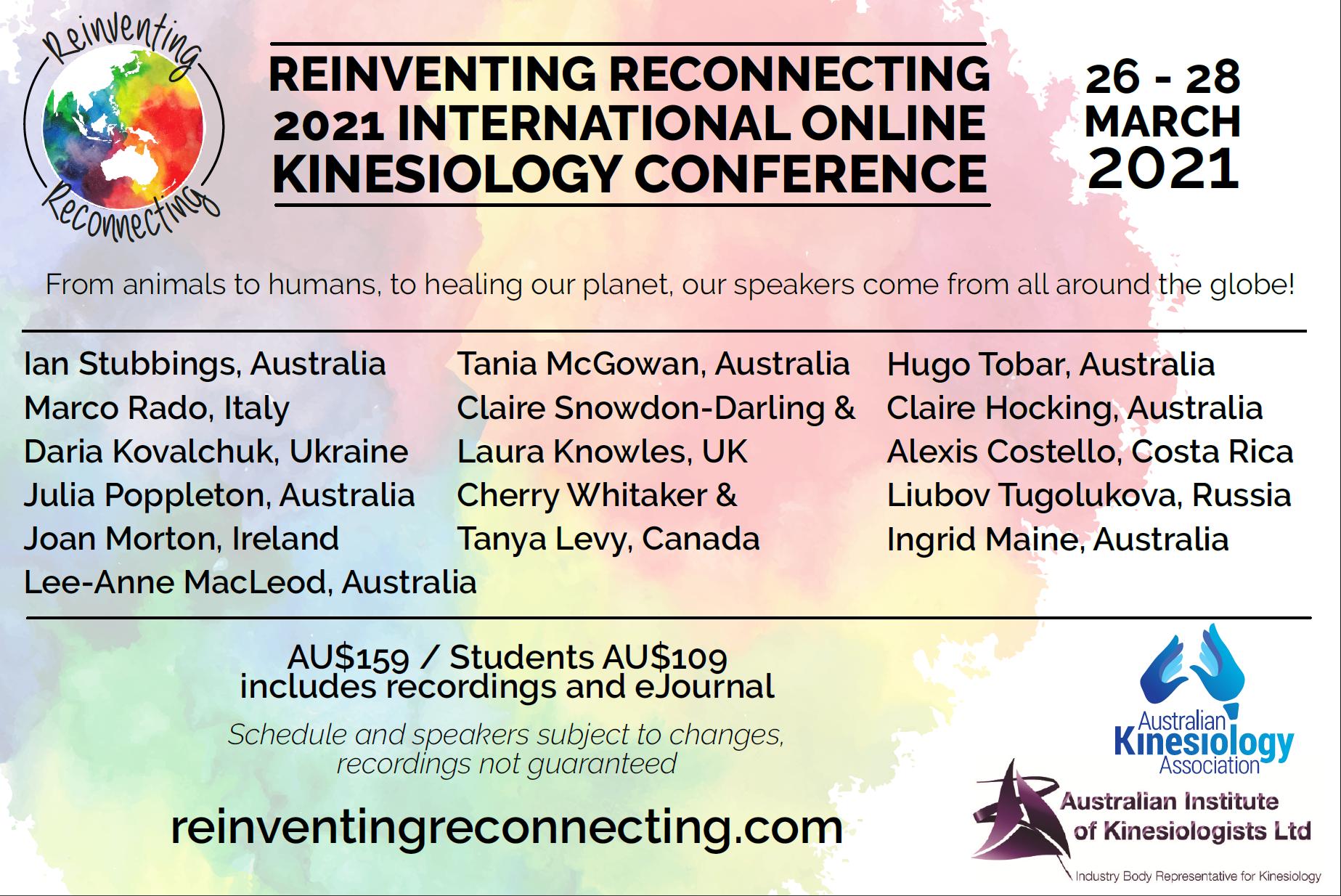
A: What about nutrition that we could be using to support our immune systems?
W: Everyone knows about vitamin C for the immune systema and vitamin D. There are studies showing that those who take vitamin D are less susceptible to coronavirus and viruses in general. If I want to see if a client is deficient in D I can circuitlocalize the Spleen point that we use in Biokinesiology – if that’s unlocking, one of the nutrients that can lock it is vitamin D. I supplement with D3, because England isn’t known for its sunshine! In order to tackle this virus, the authorities have told everyone to stay inside… it would have been better to have all the old folks go out and sit in the sun. To find a vitamin C deficiency, I can check the thymus and the adrenals – if those reflexes unlock, I can challenge vitamin C and see if that locks it. Remember that vitamin C is water-soluble, so under large amounts of stress you can deplete it very quickly. The coronavirus primarily attacks the respiratory system. In TFH, what’s the major nutrient to balance all your Lung muscles? Vitamin C. So everyone should be taking those two, Vitamin C and D. Zinc. Vegetables high in C and herbs like astralagus and echinacea are helpful as well.
A: We’ve talked about a few different things here: finding control and purpose, clearing negative emotions bringing in the positive that we need to support the thymus and heart chakra. What other things should we be doing as selfcare?
W: I have found after decades in this field that some of the most powerful things are the simplest. Sometimes people think that if the simple things worked the medical system would be using them, but that’s because they don’t understand the medical profession! I like a technique developed by Dr. James Pennebaker. He saw people who had trauma who hadn’t trusted that they could go to anyone to talk about the issue, so they stuffed it. And he correlated the fact that they had this trauma and hadn’t dealt with it with the fact that these were always the ones in the infirmary and always sick. He asked himself: how can I help people who are too afraid to talk about what they have gone through? He came up with a technique where you write about your thoughts and feelings as deeply and quickly as possible for 20 minutes and do that four days in a row. Don’t worry about spelling, grammar, etc. but it has to be deepest thoughts and feelings both or it’s not going to work. You begin to get a lot of emotions coming up that you’ve been keeping a lid on. And this has a cost because it takes a lot of energy to keep a lid on it which means less energy for the rest of the system to operate which is why the immune response is suppressed. When they write, the emotions surface and then they disappear. By the end of the 4 days, they have acceptance, understanding and an inner tranquility. And they are no longer sick all the time. They did a study with this, measuring the T-lymphocyte level showing that this technique raised it and several weeks later, the levels were still raised. (stories about this in the video)
A: Are there any resources you would suggest for this wanting to explore this topic further?
W: For the Pennebaker technique he wrote a book, Opening Up: the Healing Power of Confiding in Others. It shows research with many different groups and how it all works. I like that kind of book because you can see the ongoing research and development and it gives you ideas. Another would be a book by Johan Hari called, Lost Connections: Why You’re Depressed and How to Find Hope. He went on a research
journey and found that most depression and anxiety is not deficiency of a medicinal drug at all but rather a lack of connection. I teach a workshop called Overcoming Adversity that uses many of these techniques. And I have a new book coming out next month! It will be a lot of the techniques I have been using over the last few decades, with no muscle testing. It wasn’t designed for coronavirus conditions but it’s ideal because people who are not in a position to do muscle testing can read this book and turn around and apply it immediately to get more control over their lives and relieve distress.
How are you using your Modern medicine is about destroying the invader. We are making the host stronger.
Stress Relief Tools?Dr Wayne Topping was born in New Zealand and went to Victoria University in Wellington where he graduated in 1974 with a PhD in geology. Researching active and dormant volcanoes, glacial deposits in the Antarctic, and archaeology in the Middle East, were fascinating; and he loved teaching geology at university level. However, once he became a Touch for Health instructor in 1977 in the United States he was hooked. Wayne found balancing the body with kinesiology even more fascinating than geology. By 1980 Wayne decided a career change was in order, so he trained with John Barton at the Biokinesiology Institute in Talent, Oregon to become a Biokinesiology Instructor. Wayne has maintained his passion for Touch for Health and became an IKC faculty member for the United States in 2000 and more recently caretaker faculty for Russia and Hungary.
Wayne continues to teach Biokinesiology in several different modules and founded Wellness Kinesiology with its 20+ courses. Dr. Topping has written several books and taught extensively in 23 countries. Wayne met Diane at a conference in 2007, decided she was more exciting than the US, put almost everything in storage then moved to the United Kingdom in 2010 where they live just north of Manchester and Wayne opened up Wellness Kinesiology Institute.
Living Dynamically –Immunize Yourself through Movement

By Michelle Greenwell
When I first learned Touch for Health™ I was mesmerized by the simplicity of the exercises to balance the body systems. Holding points on your forehead to balance emotional stress, tracing the meridians to create energy flow, and rubbing some points (NeuroLymphatic) on the body and feeling the energy flow or “buzz” throughout. While I was learning Touch for Health (TFH), I was also learning Tai Chi. My body was extremely tight, stressed, and fatigued. The movement patterns helped me to focus, to breathe deeper, to release tension within the muscles and the structure of the body. Both programs were valuable, and both created significant changes within my body and within my life and beyond to others. Fast forward through two decades of intense study and experience with bioenergetic feedback from the body through muscle monitoring, and the knowledge of muscle relationship to organ systems and energy flow. Fast forward through the study of Tai Chi, Sabre, Lok Hup, and Sword. Fast forward through my Master’s degree studies where I discovered that the two programs were really one, like two sides of a coin, and that purposeful dancing could also be included in this mix. Once known as Dance Kinesiology, it is now part of Somatic Movement.
What does all this information have to do with the immune system and our ability to be full of energy, vitality, and a love for living? It is our ability to live dynamically, to create “innate healing potential” through purposeful movements that support what we learn in TFH and what we experience in Somatic Movement and Tai Chi. In TFH we can trace the meridians through a time -of-day flow, specifically for an organ system, or through the five-element wheel. In the first 17 movements of the Tai Chi set we will have dynamically expanded and contracted the meridians to open their flow. By the end of the 108 movements, we will have flowed through a full cycle of dynamic movement that will have balanced the five-element wheel through both the Ko and Shen cycles. The power of the flow balanced through the meridians creates the opportunity for the organ systems to have the energy they need to engage in wellness. We can achieve a similar possibility with a 14 muscles balance, and we can release any blocked patterns by engaging the body in movement to keep that flow open.
While working towards my Master’s degree I was asked to do a book review on two books related to complementary and alternative medicine. I chose John and Matthew Thie’s “Complete Edition of Touch for Health: A Practical Guide to Natural Health with Accupressure Touch,” and “The Do-In Way: Gentle Exercises to Liberate the Body, Mind and Spirit,” by Michio Kushi. I had never done a book review at a post graduate level, and with my inquiry mind, I dove into each book to see where the two approaches meshed. At the end of a very long day of sleuthing I had created a Tai Chi movement set that utilized the knowledge of muscles/meridians/organs with movement patterns that engaged them in a Ko cycle, and Qi YINtegration with muscle monitoring was born. I should add here that I did not complete the assignment correctly, but the knowledge gained by my misdirected attention created a system that has provided me with endless possibilities and knowledge for balancing the body and the biofield. While studying about Master Moy Lin Shin’s techniques, the 108 Moving Meditation form that
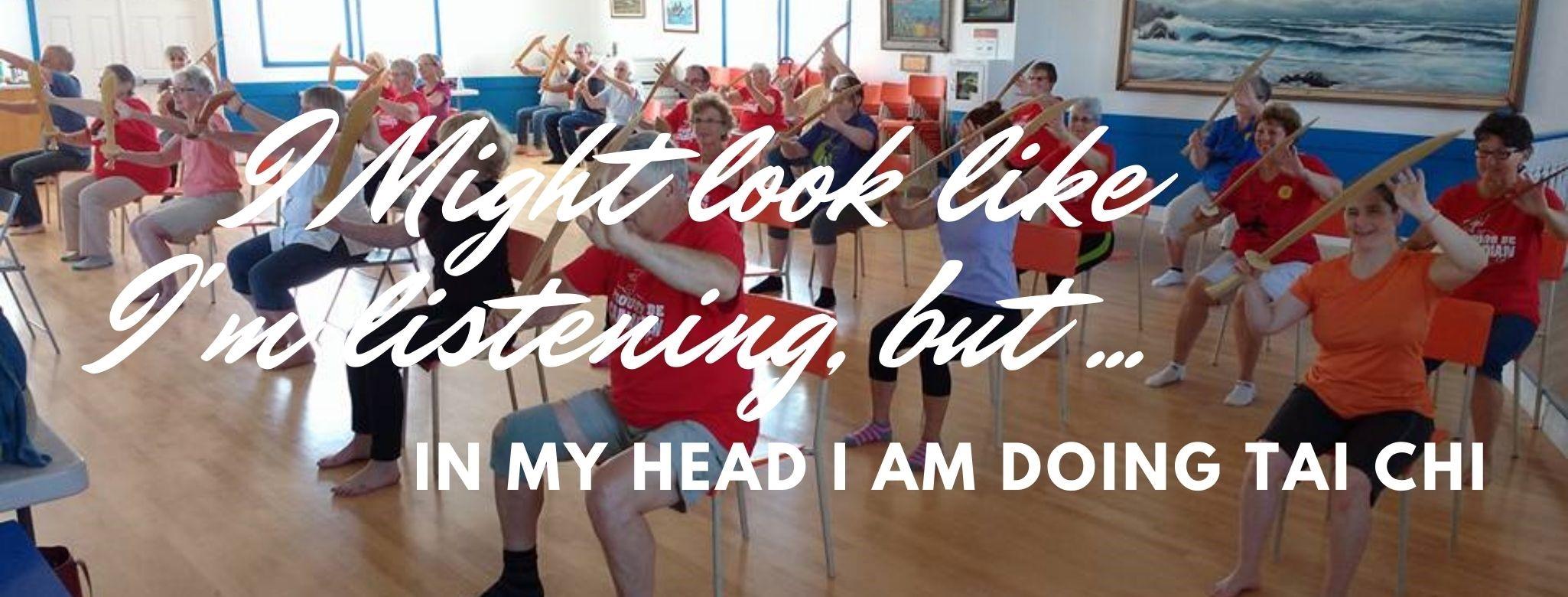
I practice, I was enthralled by the stories of him using the Don Yu action for hours with students that had very weak immune systems and weak muscle power. He taught all of us that the Don Yu was the most important action to boost the system. Of course, he would not have said it this way, in fact, he would have said nothing at all. He would have just told you to do more Don Yu’s, no matter how fatigued you might feel. Why this approach? Why this endless drilling of an action? Don Yu’s are like doing a squat that you would find at the gym, with a few significant details. There is an arm action that accompanies the leg action (which creates a whole-body approach to the movement), and you are focused on opening the lower back by softening the fascia around Lumbar 3,4,5 and Thoracic 12, 11. When the action is done seated in a chair with only the arm action, the inner organs are massaged by the action and this creates an increase of flow through the lymphatic and circulatory system, a deepening of the breath, a flow within the fascia to open communication between the systems. The meridians that run through the arms and into the middle of the body are also massaged, oh, I believe that is all of them! The Seated to Standing Don Yu’s engage the lower part of the body and provide a movement pattern that engages the reflexes through the feet as well as the Gaits that we assess and stimulate in TFH. The Standing Don Yu provides the means to open and close the area of Lower Dan Tien, the Sacral Chakra area, as well. The turning of the palm as the hands lift and press down shifts the angle of the pelvis and the dynamics of the leg and hip muscles through the action. Energy is built and stored in the Lower Dan Tien for use later. Known as the Golden Pill, this warehouse for energy can expand into the bones and joints to create the ability for homeostasis to be found in the systems of the body. The development of the 5-Element Set with Sound and Color creates the opportunity to balance the wheel and bring in the TFH balance that I adore the most. A balance done in TFH with a goal and color has always been profound for me. Dr. Sheldon Deal in his programs has always emphasized the importance of wearing the color of the day and keeping the color that your body requires for balance in contact with the skin. The addition of the Six Healing Sounds from Traditional Chinese Medicine supports the same idea as the Sound balance in TFH. Put sound, color, and movement specific to the wheel and you have a dynamic package to balance the body. If you wish to muscle monitor the section or element that is required to create balance, this can be assessed, as well as the number of repetitions, the direction to face, and speed to do the movements at.
One of the gifts that I have adored about movement is that movements don’t lie. When the body is out of balance, or a specific goal is being balanced through movement, there will be a point in the movements when the body will become very uncoordinated, the mind may not remember the sequence, or there may be fatigue in the action. Then, as the pattern is shifted the body sensations reveal coordination, ease of movement and the feeling of increased strength as the systems develop flow. This is the point that the goal has been embodied and the systems are in flow to the goal. It is always a remarkable time. I find this same gift of knowledge in balancing a goal using Tai Chi stair walking as well. We have incredible gifts in the knowledge passed to us by our predecessors in TFH, Tai Chi and many more disciplines. Utilizing the knowledge of posture assessment, dynamic movement, and goal setting can be so powerful to ourselves in
keeping our systems immunized through action, and for providing homework and energy building for our clients. Want to try out the techniques mentioned in this article?
Seated to Standing Don Yu with Figure 8 hands: https://youtu.be/H2cZopYYRI8
Spine Rotation Foundation (inspiring the spine, muscle, organ system): https://youtu.be/uHFcW9fwhRQ
Michelle Greenwell has been a long-time contributor to KinesioGeek magazine bringing her perspective of wellness and engagement into our focus. You can find her FREE videos on Youtube: Tai Chi Wellness and the Seated Form Series, which she filmed with her parents who are also Tai Chi instructors turning 80 this year. She has also combined her knowledge of TFH and Tai Chi in the other playlists provided for the public through Covid restrictions: Tai Chi Online (108 days of exploration) and Tai Chi Online Fall 2020 which is her current weekly outreach through Facebook Live sessions, Fridays on the Tai Chi Wellness page. The Qi YINtegration program she mentions that combines her love of TFH and movement can be found on Facebook as well as the current online class schedule found at www.dancedebut.com on the class listing blog post. The Set 1 book is in her shop for those wondering how they can bring more homework ideas to their clients after a session. Be Well with Michelle Greenwell is her podcast found on Spotify and Buzzsprout.
Research related to movement and the immune system:
https://www.health.harvard.edu/newsletter_article/In_Brief_Tai_chi_gives_immune_system_a_boost https://www.ncbi.nlm.nih.gov/ pmc/articles/PMC7400467/ https:// balancedlifetaichi.com/blog/ your-immune-system-on-taichi
